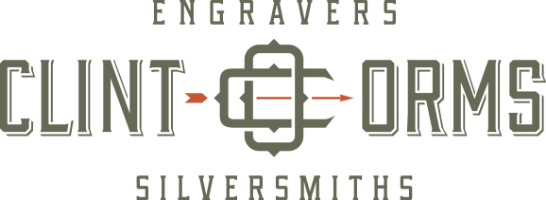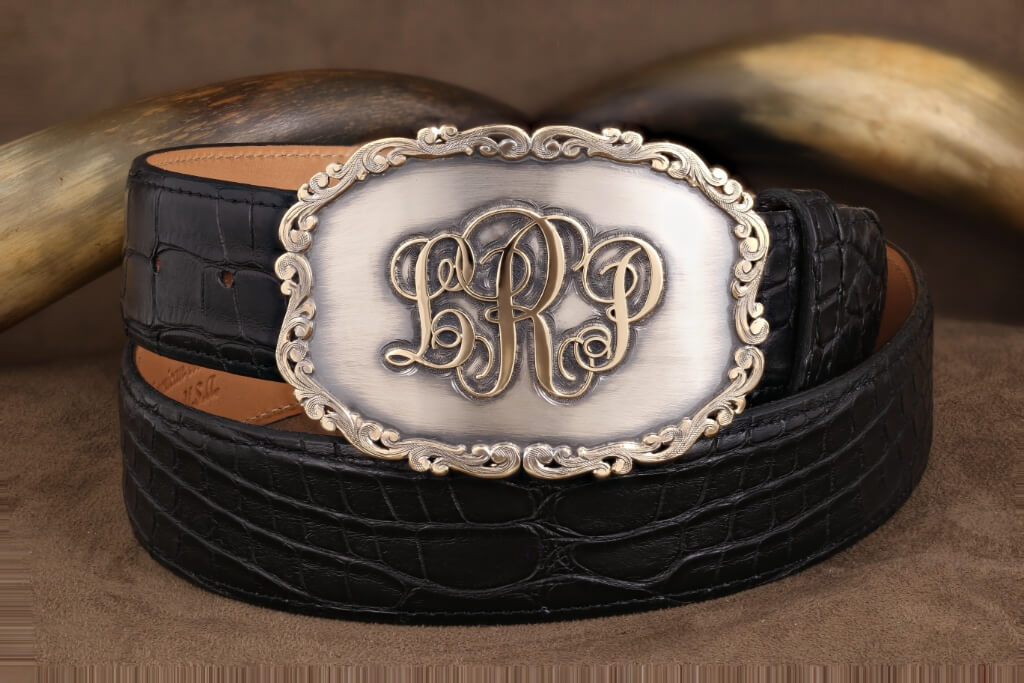Clint Orms, an American metalsmith and engraver, has made an art form out of keeping men’s trousers up. If you are the kind of person who is prepared to spend $50,000 or more on a belt buckle (starting prices hover just above $1,000), then you will no doubt be familiar with the Orms oeuvre.
Orms’s father worked as a designer for a Western clothing company, and his grandmother was a seamstress. Her handiwork entranced him when he was a child. “Every time I went to her home, she was always tearing apart clothes and putting them back together. I was just fascinated with what it took to do that sort of work,” he says. “I'd do little jobs for her, things like seat covers, so at a young age I was making things. My dad really loved making things, so it was always just a part of my family. If you wanted something, you could make it.”
This self-sufficiency proved useful in Orms’s hometown of Wichita Falls, Texas, which has some of the coldest winters and hottest summers in the U.S. “It's a pretty barren place, and there's not much around there. So you're going to have to make your own fun,” he says, chuckling. “They say Wichita Falls creates great personalities.”
One of Clint Orms's buckle designs, a Pecos 1893 buckle adorned with a capital "B." Orms learned silversmithing and worked as an engraver before setting up his own company in his early 30s to create heirloom-quality buckles.CLINT ORMS
In Orms’s case, that environment created a soft-spoken man of rangy physique and thoughtful mien. The 19th-century American artist Frederic Remington would have loved him as a subject for one of his canvases or bronzes: His bespectacled face is youthful for his 50-something years (but lined with the experience of someone who has spent much of his life outdoors) and is highly observant. He does not open his mouth unless he has something of import to say.
While in high school, he competed in bareback riding contests (as I said, Remington would have loved him) and noticed the pride that veteran rodeo stars took in their belt buckles. For the perpetually itinerant cowboy, a belt buckle was a treasure, a portable and practical work of art that could be appreciated even on the trail and passed on to another generation.
World of self-expression
Orms began crafting hand-tooled leather belts in his early teens. A hand-tooled leather belt can be art—a piece of bas-relief sculpture worn around the waist—but it is also a functional object that over time gets worn and distorted and is often outgrown by its wearer. Like all artists, Orms wanted to attain a scrap of immortality through his creations. So after high school, he learned silversmithing and worked for several companies as an engraver before setting up his own company in his early 30s to create heirloom-quality buckles.
Orms talks about his belt buckles in much the same way I have heard Parisian jewelers discuss their work. He describes the play of light over the differently finished surfaces, talks about the varied effects of silver and gold, and enthuses about the gems in his buckles. (Not all Western belt-wearers are as understated as Orms.) “I am really proud of the diamond setting,” he says. “I have a wonderful diamond setter, and I would put him up against anyone in the world.”
What stands out on Orms’s buckles is their impression of depth. They are solid, substantial objects, deeply engraved with cross-hatching to enhance the sense of light and shade. But this is just the background upon which other work is laid: sometimes figurative sculptures of animals or Western scenes, sometimes delicately hand-sawed filigree foliate in silver and gold.
There are two basic types of Orms buckle: the trophy buckle, a rectangle or scalloped plane of silver or gold covering an area the size of a cigarette packet, which provides a “canvas” for depicting everything from rhinos to roundups; and the ranger set, named after the Texas Rangers, which consists of a hoop-shaped buckle, one or two silver loops called keepers and a decorated tip. Out of these two basic forms, Orms has conjured a world of self-expression.
To keep track of the variations on these two themes, Orms has named his belt buckles after the counties of Texas. For example, Zapata is the name of a classic, rectangular trophy buckle, while Webb is in the more flamboyant, curvilinear, scalloped style. Pecos County lends its name to a classic ranger set with a rounded buckle and scallop-ended tip; Clay is a more modernist, flatter, straight-edged take on the same form. Orms can turn even the plainest ranger set into something remarkable, such as the set of 100 Houston buckles he made with a pachydermal texture, with two silver tusks forming the buckle’s top and bottom edge.
The variety is bounded only by his fecund imagination and the requests of his customers (around half his work is custom). But given the level of detail in each piece and the hours required to craft a single buckle, the supply is limited. You might have to wait, but once you become the owner of an Orms belt, you won’t want to hold your jeans up with anything else.





Leave a comment (all fields required)